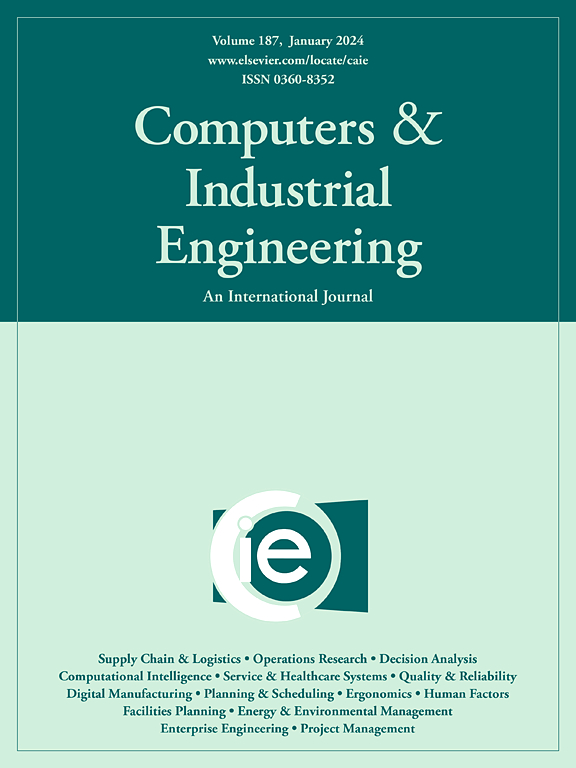The backroom assignment problem for in-store order fulfillment
IF 6.7
1区 工程技术
Q1 COMPUTER SCIENCE, INTERDISCIPLINARY APPLICATIONS
引用次数: 0
Abstract
Efficient in-store fulfillment is essential for today’s omnichannel services, as retailers are taking on tasks previously performed by customers themselves while shopping. This paper introduces a novel backroom assignment problem for omnichannel stores, aiming to optimize the allocation of articles to a forward pick area exclusively dedicated to online demand. We present both random and dedicated storage policy formulations for the backroom assignment problem (BAP), determining the allocation of articles, their quantities to the forward pick area, and the selection of storage units. To achieve a balance between computational efficiency and solution quality, we introduce two decomposition methods. We evaluate the impact of our proposed BAP formulations using real data from a drug store chain and quantify the effects of an increasing online demand ratio and different forward pick area sizes on the in-store logistical effort. Results from a three-store use case demonstrate that backroom assignments can substantially reduce in-store logistical effort compared to a scenario without backroom usage, especially as demand shifts increasingly towards the online channel. The results also show that our decomposition methods are effective in handling problem instances in most cases, equipping retailers to evaluate the influence of backroom assignments. We conclude with managerial implications and explore future research opportunities.
求助全文
约1分钟内获得全文
求助全文
来源期刊

Computers & Industrial Engineering
工程技术-工程:工业
CiteScore
12.70
自引率
12.70%
发文量
794
审稿时长
10.6 months
期刊介绍:
Computers & Industrial Engineering (CAIE) is dedicated to researchers, educators, and practitioners in industrial engineering and related fields. Pioneering the integration of computers in research, education, and practice, industrial engineering has evolved to make computers and electronic communication integral to its domain. CAIE publishes original contributions focusing on the development of novel computerized methodologies to address industrial engineering problems. It also highlights the applications of these methodologies to issues within the broader industrial engineering and associated communities. The journal actively encourages submissions that push the boundaries of fundamental theories and concepts in industrial engineering techniques.
 求助内容:
求助内容: 应助结果提醒方式:
应助结果提醒方式:


